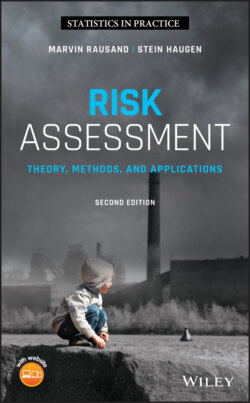Читать книгу Risk Assessment - Marvin Rausand - Страница 15
1.2 Important Trends
ОглавлениеMany trends in society have led to increased focus on risk and risk assessment. Partly, this is due to increased attention to and reduced willingness to accept risk, partly due to increased risk, and partly due to new and different risk sources being introduced or emerging.
Increased attention and reduced willingness to accept risk often go hand in hand. When accidents occur, in particular serious accidents, the media attention is very high and the interest among the general public is correspondingly high. More rapid and comprehensive access to news about accidents, through the Internet, has further increased our attention (and fear) of accidents.
The increasing focus and our reduced preparedness to accept accidents may be seen as a result of our increasing wealth. In the rich part of the world, many of the dangers that we were exposed to earlier, such as life‐threatening diseases, hunger, and war are far less prominent in our lives. Our basic needs are generally well attended to and our attention has therefore turned to other causes of death and losses. This can explain why there are large differences in legislation, regulations, and general attention to risk in rich and poor countries. From this point of view, the expectation that accidents should be avoided can be seen as a result of the increasing standards of living.
Many new trends and developments either increase risk, change existing risk, or introduce new sources of risk. Some examples of different character are given in the following.
1 Higher speed. In recent decades, high‐speed trains have become increasingly common. Higher speed implies more severe consequences if an accident occurs.
2 Increasingly connected computer networks. More and more devices are linked through the Internet. This does not just apply to computers, but many other devices such as cars, kitchen appliances, power systems, electrical meters, heating systems in homes, and mobile phones. This introduces possibilities for accessing and hacking devices from anywhere in the world. The increased number of connected devices increases the possible consequences and the magnitude of the consequences. With the rapid expansion of the Internet of things this problem increases day by day.
3 Increased competition and production pressure have several aspects that influence risk. Processes are moving faster with less time for preparation and planning, with increasing pressure to be efficient, leaving less time to take care to avoid accidents. Cost cutting may also increase risk.
4 Autonomous systems is a new technology that changes risk. Less people are involved, meaning that fewer are exposed if an accident should occur. On the other hand, people not directly involved may be more exposed (e.g. pedestrians being hit by autonomous cars). Machines may be more reliable for routine tasks than operators, reducing the probability of making errors, but operators are usually better at adapting to unexpected or unusual circumstances. Autonomous systems are complex, and we may not be able to predict all the ways they can fail.
5 Terrorism has existed for a long time, but mainly locally. It is only in the last couple of decades that this has become a global phenomenon.
6 Climate change is a global problem that changes risk in many ways. Risk related to natural hazards changes, with not only more violent storms, frequent flooding but also droughts. The world can be affected in different ways, among others reduced food production and lack of drinking water. This can in turn lead to hunger and more refugees.
To manage the effect of all these changes, we need to understand them and this requires systematic methods to identify them and to analyze them.
